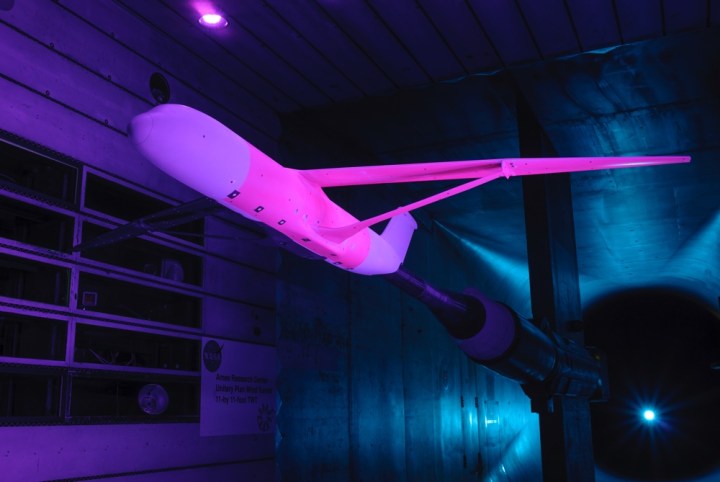
The pink paint being used by the space agency is a pressure-sensitive material developed and used by NASA engineers for the past 25 years. The paint was formulated and refined by NASA in the late 1980s by former astronaut Janet Kavandi and a team of researchers from the University of Washington.
The base material relies heavily on the work of German scientist Hans Kautsky, who in 1935 discovered that the brightness of luminescence was influenced by oxygen — he found that the greater the oxygen concentration, the lower the luminescence.
The researchers at NASA in turn took their knowledge of how the air pressure in a wind tunnel changed oxygen levels and combined it with Kautsky’s work on luminescence to create their signature pink glowing paint.
Related: ‘Can I borrow your pickup?’ NASA needs help moving an asteroid
To test each part of the aircraft, NASA coats the aircraft components with a layer of the pressure-sensitive paint that is one-and-a-half thousandths of an inch thick. Once the paint dries, the part is placed in a wind tunnel that is equipped with blue LED lights. These lights excite the luminophores inside the paint and cause them to fluoresce a pretty pink.
As the wind passes over the surface of the craft, it creates areas with different surface pressures. Areas with high pressure contain higher levels of oxygen, which causes the luminophores to dim, while low-pressure areas continue to shine brightly because their oxygen levels remain low.
Black and white cameras capture these subtle differences, which are then analyzed by engineers who are developing and testing new aircraft designs. Armed with knowledge gleaned from these aerodynamic studies, NASA expects to use this information to develop planes that use half the amount of fuel, produce 75-percent less pollution and cut noise to one-eighth of what planes today produce. Talk about the power of pink.
Editors' Recommendations
- NASA’s experimental electric plane takes ‘major step’ toward first flight
- NASA has wonderful news for its plucky Mars helicopter
- Mars has a new explorer: NASA’s Perseverance rover lands on the red planet
- NASA’s Juno craft has found some weird stuff in Jupiter’s atmosphere
- NASA’s WFIRST telescope has a new approach to the hunt for exoplanets



